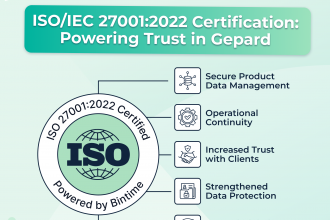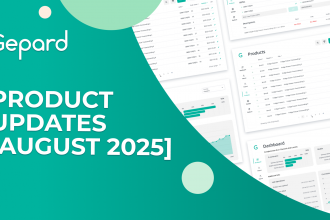Automotive Product Information Management [Full Guide 2025]
In 2025, excelling in product information management for the automotive industry can set your company apart as eCommerce transforms the marketplace. For businesses that get it right, aligning product data across multiple platforms isn’t just a task—it’s a strategic advantage that boosts sales and elevates customer experience.
In this article, we’ll guide you through the best practices to transform your product information management into a powerful tool for your automotive business growth.
What is Automotive Product Information Management?
Key Benefits of Product Information Management for Automotive Industry
Automotive Product Information Management (PIM) systems are revolutionizing the industry with four game-changing benefits, such as optimizing tax considerations like BIK on company cars, which can affect how automotive businesses report and manage employee vehicle data for tax purposes. Let’s dive into how enhanced product visibility, improved lifecycle management, better customer engagement, and optimized supply chain operations can transform your business for the better.
Enhanced Product Visibility and Searchability
A PIM for automotive industry significantly enhances product visibility and searchability. By centralizing data, PIM ensures that customers can easily find detailed information about vehicles, parts, and accessories across all sales channels.
For example, someone looking for brake pads can swiftly find the right product with full specifications and compatible vehicle models on the manufacturer’s website. This streamlined search process not only makes shopping easier but also encourages additional purchases by suggesting related items like brake fluids or tools.
Partnering with the Best Marketing Services can play a pivotal role in enhancing your product’s visibility and searchability across digital platforms. These services leverage data-driven strategies, including SEO, targeted advertising, content marketing, and social media outreach, to ensure your products appear where your customers are looking. By optimizing product listings, refining keyword strategies, and amplifying brand messaging, top-tier marketing agencies help drive qualified traffic to your site. This not only boosts your online presence but also directly contributes to higher conversion rates and increased product sales—making professional marketing support a key component of sustainable business growth.
Improved Product Lifecycle Management
Automotive PIM revolutionizes how automotive products are managed through the entire lifecycle: from inception to retirement. By keeping all product data centralized and current, automotive PIM ensures that every update, from design tweaks to manufacturing changes, is instantly reflected across all channels.
For example, an update in a vehicle’s safety features can be immediately available to sales teams, dealers, and customers alike. This seamless flow of information not only reduces errors but also improves inventory management and ensures that product data stays relevant throughout its lifecycle. This keeps everyone, from sales teams to customers, updated and engaged with the latest product details.
Enhanced Customer Experience and Engagement
Automotive PIM significantly boosts the customer experience in the automotive industry by ensuring comprehensive and easily accessible product information.
For example, when customers search for new car tires in the PIM automotive aftermarket, they can quickly find detailed specifications, compatibility with different car models, and genuine customer reviews all in one place. This complete transparency allows customers to compare options thoroughly, see what others say about tire performance and durability, and make confident, well-informed decisions. Such detailed guidance enhances customer satisfaction and also increases engagement with the product and brand.
Optimized Supply Chain Management
Automotive aftermarket PIM streamlines supply chain management in the automotive industry by providing real-time insights.
For example, a company can track automotive battery stock across warehouses, predict demand based on trends, and adjust orders accordingly. This system also evaluates supplier performance, noting how timely and accurately suppliers deliver the products. With this data, businesses can manage inventory more efficiently, avoid overstocking or running out of items, and choose the best suppliers. These capabilities make operations smoother and help companies respond effectively to market demands, which saves time and reduces operational costs.
Best Practices for Implementing PIM in the Automotive Industry
#1. Customizing PIM Solutions to Automotive Requirements
To implement automotive product information management effectively, tailor PIM solutions to meet the specific demands of the automotive industry. Consider these key aspects for customization:
- Data Attributes: Include essential automotive-specific details like OEM (original equipment manufacturer) numbers, compatibility, and performance metrics. For example, ensure the system can track which engine models are compatible with a specific spark plug.
- Taxonomy Structure: Build a clear structure from broad categories (like engine components) down to specific items (such as fuel injectors). This helps users easily find and manage different parts.
- Workflow Processes: Set up workflows that follow industry standards, covering everything from part design to market release. Include steps for quality checks and updates for compatibility when new vehicle models are released.
These steps help create a PIM system that’s both efficient and accurate, tailored for the automotive sector.
#2. Training and Education for PIM Users
Effective training and education are vital for maximizing the benefits of PIM for the automotive industry. Here’s how to equip users to use the system efficiently:
- Comprehensive Training Programs: Create detailed training sessions that teach all aspects of the PIM system, including practical exercises that simulate real-life tasks.
- Continuous Education: Keep training up-to-date with regular updates as the system evolves. This ensures everyone knows how to use new features and maintain efficiency.
- Role-Specific Training: Provide customized training for different job roles. For example, teach sales personnel how to efficiently locate product compatibility information, while IT staff learn more about managing system integration and maintenance. Incorporating AI for Google Slides can also help teams quickly generate tailored training materials for each department.
#3. Integration with Third-Party Systems and Tools
Effective integration of product information management automotive systems with third-party tools is essential for enhancing functionality and efficiency. Here’s how to strategically integrate these systems:
- Identify Integration Points: Determine which third-party systems, such as CRM software, eCommerce platforms, and digital asset management (DAM) systems, need to connect with your PIM. Recognizing where these integrations can add value is crucial.
- Use Standardized Interfaces: Implement APIs (Application Programming Interfaces) and standardized data formats to facilitate seamless data exchange between systems. This approach helps ensure data accuracy and consistency across different platforms.
- Collaborate with Vendors: Engage with the vendors of your CRM, eCommerce, and DAM systems to tailor the integrations to your specific needs. Their expertise can streamline the integration process, making it more effective.
#4. Monitoring and optimizing PIM performance
Want to ensure your product information management automotive system stays effective? Regular checks and updates are crucial. Here’s how you can keep your PIM system in top shape to meet the evolving needs of the automotive industry:
- Set Performance Metrics: Establish clear metrics to evaluate the effectiveness of your PIM system, such as data accuracy, update frequency, and user accessibility. These benchmarks help in assessing whether the system is meeting its intended goals.
- Regular Reviews and Updates: Schedule regular assessments of the PIM system to check its performance against the set metrics. Update the system as needed to address new business requirements, technological advancements, or process improvements.
- Use Feedback for Improvements: Collect feedback from users regularly to identify areas for enhancement. User insights can provide valuable information on practical issues and help tailor the PIM system to better serve the needs of the business.
Now let’s delve into some specific use cases of automotive product information management.
PIM for Automotive Case Studies
Automotive giants like BMW Group, Volkswagen Group, and Toyota Motor Corporation are using PIM technologies to streamline their product data processes.
For example, Volkswagen Group (including its subsidiaries like Audi, Skoda Auto, and Seat) is using the automotive PIM solution to centralize its product data and also to syndicate it across multiple brands, markets, and sales channels. It enables buyer contact through different touchpoints: from traditional websites to mobile devices. Their automotive PIM also allows them to update prices, inventory, and promotions in real time across many sales channels to avoid any costly mistakes.
Heritage Part Center, offering replacement parts for Porsche and Volkswagen vehicles, enabled automotive aftermarket PIM that serves as a single source of truth, allowing for efficient product creation, enrichment, and instant product updates. It radically accelerated the company’s time-to-market, increased its conversion rates, and boosted time-to-market.
Future Trends and Innovations in Automotive PIM
Looking ahead, the future of Automotive Product Information Management (PIM) is exciting, with new technologies like Artificial Intelligence (AI) and the Internet of Things (IoT) set to transform how data is managed in the automotive industry.
Imagine AI automating complex data processes and reducing errors, while IoT allows vehicles to update your systems in real time. These technologies will streamline operations and improve data accuracy, changing how the industry handles information.
Curious about what these innovations could mean for your business? Consider reaching out to the Gepard team to discover how their solutions can prepare you for the future of automotive data management. Our experts are ready to guide you through these exciting technological advances, ensuring your business is well-equipped for the future of automotive data management.



